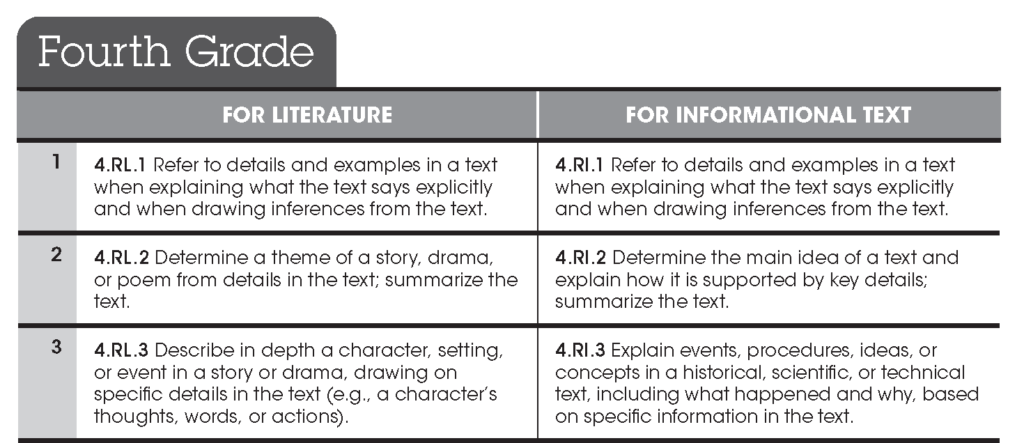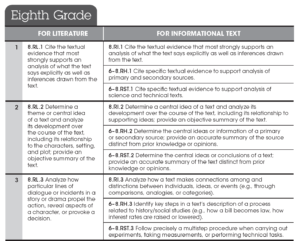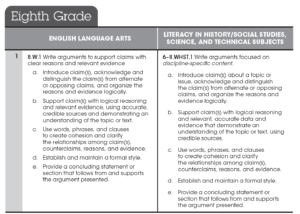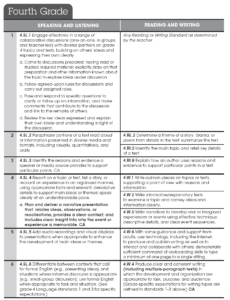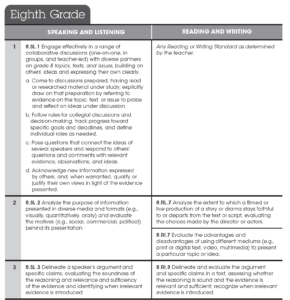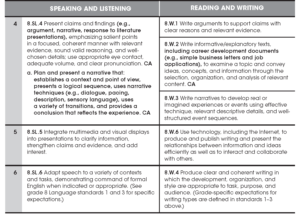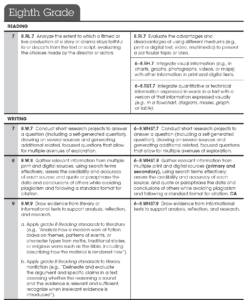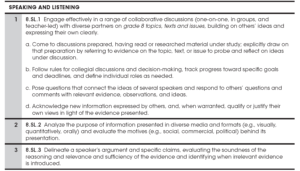Share this article.
The Common Core State Standards for English Language Arts & Literacy in History/Social Studies, Science, and Technical Subjects are not your traditional set of standards. Yes, they articulate end-of-year expectations for students in kindergarten through high school. Yes, they provide common guidelines for what it means to be college and career ready by grade 12. Yes, are clear about what is most essential for a literate person in the 21st Century.
We all know they provide they typical signposts and guidance that we’ve come to expect from standards in education. But, did you know they also provide the scaffolds, tools, and resources to build an integrated scope and sequence, integrated units of instruction, and integrated daily lessons in that develop college- and career-ready students?
The standards are designed in a framework of patterns, parallels, and progressions that seamlessly lend themselves to integration, which as we stated in another article, is the key to providing efficient instruction that supports students in developing the skills to gather information from text, think critically about that information, and produce their thinking around the information. That’s why we are providing a series of articles with the support you need to analyze those patterns, parallels, and progressions along and the tools you need to build your own integrated literacy curriculum.
Which brings us to this article where we delve into the embedded parallels and correlations between the standards, how they fit together, and how to utilize them to support conceptual redundancy.
Let’s go…
Literacy Is a Shared Responsibility
So, why should even thing about how the standards fit together? Why can’t we have one focus standard for reading, writing, language, and listening and speaking that we teach each week?
The standards define end-of-year expectations, and each one is too complex to be taught—and mastered—in one lesson. More importantly, to be college and career ready students are expected to read, write, listen, and speak in everything they do and none of these is ever done in isolation. But, practically speaking, the standards were designed to work together across the strands and content areas. The authors are clear about that.
“The Standards insist that instruction in reading, writing, speaking, listening, and language be a shared responsibility within the school. The K-5 standards include expectations for reading, writing, speaking, listening, and language applicable to a range of subjects, including but not limited to ELA. The grades 6-12 standards are divided into two sections, one for ELA and the other for history/social studies, science, and technical subjects. This division reflects the unique, time-honored place of ELA teachers in developing students’ literacy skills while at the same time recognizing that teachers in other areas must have a role in this development as well.” (National Governors Association Center for Best Practices & Council of Chief State School Officers, 2010)
In a world where we are expected to read, write, listen, and speak in everything we do, it is unrealistic and unfair for students to only be supported in developing these literacy skills during English language arts instruction. These standards clearly articulate a shared responsibility for literacy development. In the elementary grades, there are expectations for reading, writing, speaking, listening, and language across a range of subjects and text types. For grades 6–12 the standards are unequivocal. There are distinct reading and writing standards for all content areas that correlate to the reading and writing standards for English language arts.
In this article we are going to take deeper look at four types of correlations:
- Between the reading standards in English language arts and in the content areas
- Between the writing standards in English language arts and in the content areas
- Between the speaking and listening standards and key standards in reading and writing
- Between standards in reading, writing, and speaking and listening when the focus is gathering evidence
Correlations Between the Reading Standards
The correlations are about a shared responsibility for the literacy skills all students need to be college and career ready, and those skills are articulated in the anchor standards. For the reading strand, there are 10 anchor standards, but 20 reading standards for each grade level. Why? The standards are following the lead of NAEP in emphasizing the need to balance literature and informational text. Therefore, at each grade level are 10 reading standards for literature and 10 reading standards for informational text. Now here’s where the correlations come into play.
The skills students need to access text are the same. The type of text is the variable that increases their opportunities to practice the skill and deepens students’ expertise in utilizing the skill with a variety of text. Take a look at this example from Fourth Grade, Reading Standards 1–3.
As you can see, the skills are tightly connected with the differences between the two sets of standards being attributed to terminology that is specific to the genre that is being read.
Let’s look at another example, Eight Grade, Reading Standards 1–3. You will see a new correlation. Remember, beginning in Sixth Grade, all reading and writing standards have a correlated set of standards for History/Social Studies and another correlated set for Science and Technical Subjects.
Again, the skills are tightly connected with the differences between the four sets of standards being attributed to terminology that is specific to the genre that is being read.
Correlations Between the Writing Standards
In writing, the parallels are there too. For the elementary grades, the writing standards are the same for all content areas, but, again, beginning in Sixth Grade there is a specific set of writing standards for History/Social Studies which also serves for Science and Technical Subjects. However, as you can see in this example from Eighth Grade, Writing Standard 1 the connections are just as tight as in reading with the differences being attributed to type of text and/or topic.
Can you imagine if teachers aligned their literacy instruction across content areas, students could be learning and practicing citing textual evidence from a text in order to support claims in their arguments in their English language arts class, their history class, and their science class, simultaneously. Now that’s conceptual redundancy!
Correlations Between the Speaking and Listening Standards and Key Standards in Reading and Writing
For the next correlation, it’s important to recognize that the shared responsibility for the literacy skills is not limited to reading and writing. One of the key design considerations was providing an integrated model of literacy for all of the strands. In this regard, they were successful. As you can see in these examples from Fourth Grade and Eight Grade, there are clear connections between these standards that will lead to reciprocity in students’ learning.
Correlations Between Standards When Gathering Evidence
The last type of correlation that we’re going to look at is a little different in nature. Rather than looking for one-to-one matches between individual standards based on skills, these standards are connected based and what it means to gather, comprehend, evaluate, and synthesize information and ideas. In other words, the following examples are correlated based on the task of research. These connections may seem implicit at first, but when viewed through the lens of what it means to gather evidence the connections are quite clear.
Utilizing the Literacy Correlations Develops Learnership
The Common Core State Standards for English Language Arts & Literacy in History/Social Studies, Science, and Technical Subjects are clear in the purpose of their design and in their expectations.
“The standards establish guidelines for English language arts (ELA) as well as for literacy in history/social studies, science, and technical subjects. Because students must learn to read, write, speak, listen, and use language effectively in a variety of content areas, the standards promote the literacy skills and concepts required for college and career readiness in multiple disciplines.”
The most efficient and effective way to help your students become college- and career-ready is by utilizing the design of the standards to build an integrated scope and sequence, integrated units, and integrated literacy lessons.
So, start looking at the standards in a new way and look for the connections that help you leverage the power of the literacy integration. Then check out the other articles in this series to build your learnership around:
Continue the Learning
Check out these articles and resources to continue your learning about this topic…
The Learning Brief
In this article you learned…
- The standards clearly articulate a shared responsibility for literacy development and were designed with embedded correlations that support conceptual redundancy, reciprocity, and integration.
- The reading and writing standards are correlated by skills between reading type and content area.
- The standards are designed with correlations that lead to integration of standards across literacy strands and content areas.
Can you imagine building an environment full of motivated, engaged, and eager students who own their learning?
We can.

